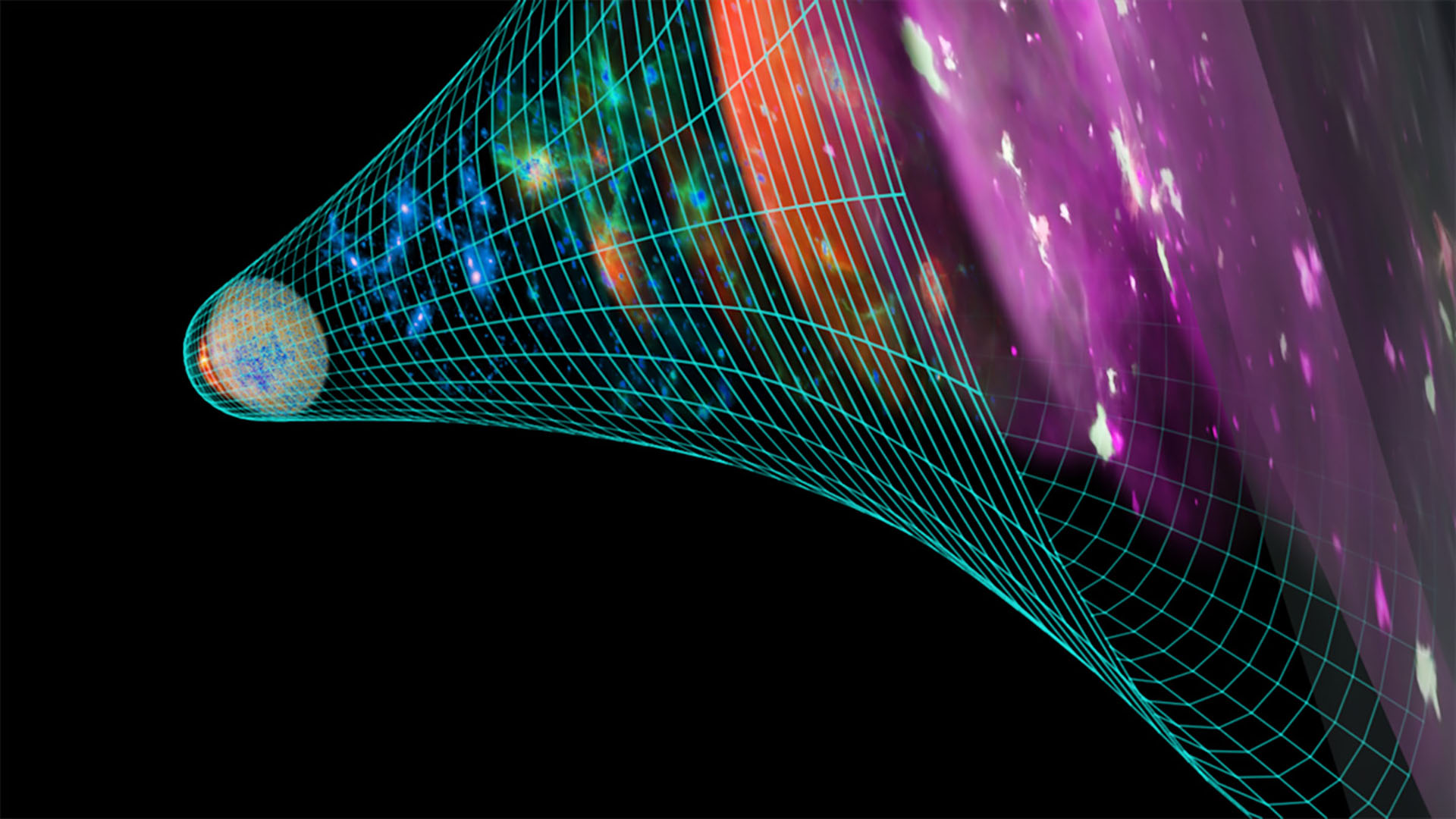This Rosh HaShanah I had the strangest dream. I dreamed that I was giving a lecture in cosmology at a university when I suddenly realized that it was Rosh HaShanah. I panicked… What was I doing at the university on such a day instead of being in my synagogue, praying and listening to sounds of a shofar?! I decided to save the day by trying to weave the three main themes of Rosh HaShanah into my lecture on cosmology. And so I began…

NASA/WMAP Science Team – Original version: NASA; modified by Cherkash
In the Rosh HaShanah liturgy, we refer to this day as yom harat olam – the birthday of the world (Machzor Rosh HaShanah). According to modern cosmology, the world was born in an unfathomable explosion called the Big Bang (the term coined by English astronomer Fred Hoyle in 1949). Long before this concept was developed in cosmology during the 20th century (first suggested by Belgian physicist and astronomer Georges Lemaître in 1927), some 800 years earlier, Rabbi Moshe ben Nachman (1194–1270, a.k.a. Nachmanides or the Ramban) described it in his commentary on Genesis I:
…At the briefest instant following creation all the matter of the universe was concentrated in a very small place, no larger than a grain of mustard… From the initial concentration of this intangible substance in its minute location, the substance expanded, expanding the universe as it did so. As the expansion progressed, a change in the substance occurred.
(For a full quote, see my post, Two Beginnings.)

This notion of the of the expansion known in cosmology as the inflation is further symbolized by the three main themes of Rosh HaShanah – Malchuyot (Kingship), Shofrot (blasts of Shofar) and Zichronot (remembrance).
 Rosh HaShanah is called Yom Trua – Day of Blasts [of the Shofar] (Machzor Rosh HaShanah). The significance of shofar blasts is central to Rosh HaShanah. The shape of the shofar – narrow at one end and expanding to a wide opening on the other – signifies cosmic expansion following the Big Bang. Before we begin blowing the shofar, we recite a verse of a psalm:
Rosh HaShanah is called Yom Trua – Day of Blasts [of the Shofar] (Machzor Rosh HaShanah). The significance of shofar blasts is central to Rosh HaShanah. The shape of the shofar – narrow at one end and expanding to a wide opening on the other – signifies cosmic expansion following the Big Bang. Before we begin blowing the shofar, we recite a verse of a psalm:
From the narrow place I called G‑d; with expansion, G‑d answered me.” (Psalms, 118:5)
According to modern theory, the universe was a “narrow place” indeed at the beginning of the Big Bang. The rapid expansion (inflation) that followed allowed for the formation of stars and planetary systems.
The act of creation is described in Psalms as the “breath” of G‑d, as G‑d ”exhaling” as it where. In this vein, there is an ancient metaphor used by kabbalists to describe the process of creation – the metaphor of the glassblower.
There are four letters in the ineffable Divine name – the Tetragrammaton – Yud-Heh-Waw-Heh. The Letter Yud, which is a dot, represents the idea in the mind of the glassblower – the sefirah of Chochmah. The Letter Heh represents the blowing of the air into the long tube – the sefirah of Binah. The Letter Waw is a vertical line or a long tube – the midot (six lower sefirot). And finally, the latter Letter Heh is the glass expanding at the end of the tube – the sefirah of Malchut. The glassblower in this metaphor is the Creator.
The kabbalists tell us that, on Rosh HaShanah, all things return to their primordial state and it is, therefore, necessary for a renewal of creation. By blowing the shofar on Rosh HaShanah, we reenact the creation of the world – the Big Bang and the expansion of the universe that followed – and implore G‑d to renew the creation for another year.
This inflation is tempered by gravitational forces alluded to by the concept of Malchut (kingship). In Kabbalah, Malchut refers to sefirat ha-malchut – the lowest of the Ten Divine Emanations. This sefirah corresponds to the planet Earth and to gravity that keeps us on this planet. Four fundamental forces – strong nuclear, weak (beta decay), electromagnetic and gravitational – correspond to the four letters of the Divine name Tetragrammaton – Yud-Heh-Waw-Heh. The last letter, Heh – representing the sefirah of malchut – corresponds to gravity. Gravity is the main force acting on a cosmological scale responsible for planetary formation, ultimately leading to conditions suitable for life. Thus, the recitation of the verses of Kingship – Malchuyot – may, on a cosmological scale, allude to gravity as the main driving force in the process of creation.
What makes cosmologists believe that the Big Bang Theory is correct? The cosmic microwave background radiation, also known as cosmic relic radiation (as it’s a relic of the Big Bang) discovered in 1964 by Penzias and Wilson (for which, in 1978, they shared a Nobel Price) is a thermal radiation left over from the Big Bang as a “memory” or relic – hence its name. Rosh HaShanah is also called Yom HaZikaron – the day of Remembrance (Machzor Rosh HaShanah). Zichronot – verses of remembrance are recited during the Rosh HaShanah liturgy. Perhaps, in a cosmological sense, Zichronot – remembrances – are the allusions to cosmic relic radiation thereby tying together all three themes of Rosh HaShanah.
I felt I was on a roll and decided to take it further by expounding on the deep kabbalistic mystery of nesira (cutting) in terms of quantum entanglement (or, rather, disentanglement) but, suddenly, I heard the blast of the shofar, and my dream was cut short. I woke up. Luckily, it was just a dream and I was soon on my way to the synagogue.
Happy New Year – Shanah Tovah!

May you have many more such sweet dreams in the coming year!
The nesira is the Creator’s way of providing evidence that, despite our subjective experience, the universe truly remains a singularity. How? Because, despite the appearance of being torn apart, our behavior can only be explained in terms of a single whole. That really is the central theme of Yom Kippur.
So it seems not quite dissimilar from entanglement, whereby we demonstrate a non-local universe by dispersing and then measuring two entangled particles.
Thanks, but I’d rather have sweet reality! :-) These days I only get to do physics in my dreams and spend my days working for a living — havel havolim! Doing physics again in my waking hours would be really sweet!
By “singularity” you probably mean a single whole rather than what we call singularity in physics — a point in a spacetime where everything goes to infinity like in a black hole. Just wanted to clarify this because there theories out there that propose that each universe is a black hole, i.e. a singularity in the mathematical sense and, conversely, each singularity is porthole to another universe.
Can you please elaborate on how the wholesomeness of the universe is the central theme of Yom Kippur?